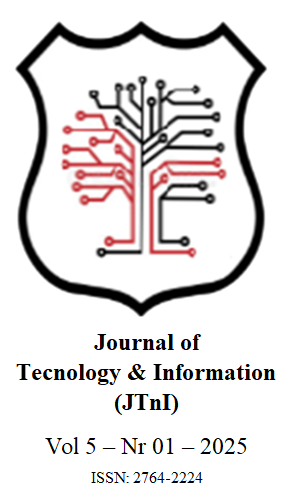THE MYTH OF THE WEAKEST LINK: HUMAN FACTOR IN INFORMATION SECURITY
Keywords:
human factor, privacy, informationAbstract
The importance of the human factor in information security is unquestionable, and this study aims to investigate the reasons that made it the most vulnerable link, while at the same time proposing a new approach, focused on the possibility of implementing measures to challenge this perception almost How universal. Although the evolution of technology has brought countless facilities to the contemporary world, data privacy has never been as threatened as it is today, where cyber attacks have become commonplace, many exploiting potential human errors. Overcoming this weakest link stigma certainly involves raising awareness and careful training, carried out on an ongoing basis, with the aim of promoting a culture of valuing information. In this context, given the complexity of current threats, it is necessary not only to adopt robust technical measures, but also to cultivate a security mentality in all strata of society, from ordinary citizens to the highest corporate spheres. The method used in this research is deductive, based on an extensive bibliographic and documentary review.
References
CAMILLO, Mark; HESS, Sebastian. American International Group. AIG. Human Cyber Risk – The first line of defence. Disponível em: https://www.aig.co.uk/content/dam/aig/emea/united-kingdom/documents/Insights/cyber-human-factor.pdf. Acesso em 02 jun. 2022. Citado na página 3.
CERT. Unintentional Insider Threats: A Foundational Study Produced for Department of Homeland Security Federal Infrastructure Protection Bureau, 2013. Disponível em: https://resources.sei.cmu.edu/asset_files/TechnicalNote/2013_004_001_58748.pdf. Acesso em 25 ago. 2023. Citado na página 5.
CENTRO DE ESTUDOS, RESPOSTA E TRATAMENTO DE INCIDENTES DE SEGURANÇA NO BRASIL. Estatísticas dos Incidentes Reportados ao CERT.br. São Paulo: CERT.br, 2023. Disponível em: https://stats.cert.br/incidentes/. Acesso em 29 jun. 2023. Citado na página 4.
DA SILVA, Maicon Herverton Lino Ferreira; COSTA, Veridiana Alves de Sousa Ferreira; PERNAMBUCO, Unidade Acadêmica de Serra Talhada. O fator humano como pilar da Segurança da Informação: uma proposta alternativa. Disponível em: http://www.eventosufrpe.com.br/jepex2009/cd/resumos/r0052-3.pdf . Acesso em 23 ago.2023. Citado na página 4.
EGRESS SOFTWARE TECHNOLOGIES. Insider Data Breach Survey Report, 2021. Disponível em: https://www.egress.com/blog/what-is-human-layer-security/2021-insider-breach-survey . Acesso em 26 abr. 2022. Citado na página 6.
EGRESS SOFTWARE TECHNOLOGIES. Egress CISO Guide: Preventing Human Error on Email, 2023. Disponível em: https://www.egress.com/media/lq0bj5bj/egress_ciso_guide_preventing_human_error.pdf Acesso em 13 mar. 2023. Citado na página 3.
FONSECA, Paula Fernanda. Gestão de Segurança da Informação: o fator humano. Pontifícia Universidade Católica do Paraná. Curitiba, 2009. Disponível em: https://www.cursosavante.com.br/cursos/curso533/conteudo7486.pdf . Acesso em 23 ago. 2023. Citado na página 5.
FONTES, Edison Luiz Gonçalves. Segurança da informação. Saraiva Educação SA, 2017. Citado na página 2.
FREIRE, R. F. P.; SILVA, H. C. C.; QUEIROZ, R. G.; BATISTA, A. A. M.. O fator humano como uma vulnerabilidade em segurança da informação. Revista Brasileira de Administração Científica, v.8, n.3, p.146-157, 2017. DOI: https://www.sustenere.co/index.php/rbadm/article/view/SPC2179-684X.2017.003.0012. Acesso em 18 jul.2023. Citado na página 7.
GARRATECH. A importância do fator humano na segurança da informação, 2023. Disponível em: A importância do fator humano na segurança da informação (garratech.com.br). Acesso em: 20 mar. 2023. Citado na página 5.
HEALTH AND SAFETY EXECUTIVE. Introduction to human factors, 2022. HSE. Disponível em: Human factors/ergonomics – Introduction to human factors (hse.gov.uk). Acesso em: 3 dez. 2022. Citado na página 3.
ITForum. Fator humano: o principal componente da segurança da informação , 2018. Disponível em: Fator humano: o principal componente da segurança da informação - IT Forum. Acesso em: 30 jan. 2023. Citado na página 2.
INTERNATIONAL STANDARD. ISO/IEC 27005:2022. Information security, cybersecurity and privacy protection – Guidance on managing information security risks, 2022. Citado na página 2.
INTERNATIONAL STANDARD. ISO/IEC 27001:2022. Information security, cybersecurity and privacy protection — Information security management systems. — Requirements, 2022. Citado na página 5.
MARCONI, Marina de Andrade; LAKATOS, Eva Maria. Fundamentos de Metodologia Científica 1 - 9. ed. - São Paulo : Atlas 2021. p.83. Citado na página 7.
MINTO, Lalo Watanabe. Teoria do Capital Humano. HISTEDBR – Grupo de Estudos e Pesquisas ¨História, Sociedade e Educação no Brasil¨. Faculdade de Educação da Unicamp, 2021. Disponível em: <https://www.histedbr.fe.unicamp.br/navegando/glossario/teoria-do-capital-humano>, Acesso em 14 jan.2023. Citado na página 2.
NEIVA SANTOS DE OLIVEIRA, F. (2018). Comunicação das Organizações: Um olhar sobre a importância da Comunicação Interna. Media & Jornalismo, 18(33), 61-74. https://doi.org/10.14195/2183-5462_33_4. Acesso em 17 de julho de 2023. Citado na página 7.
SEVERINO, A. J. Metodologia do Trabalho Científico [livro eletrônico]1. ed. São Paulo: Cortez, 2013. p.97. Citado na página 8.
STEVES, Michelle; GREENE, Kristen; THEOFANOS, Mary. National Institute of Standards and Technology. NIST. A Phish Scale: Rating Human Phishing Message Detection Difficulty, 2019. Disponível em: https://csrc.nist.gov/publications/detail/conference-paper/2019/02/24/rating-human-phishing-message-detection-difficulty. Acesso em 23 maio 2023. Citado na página 3.
VERIZON. Data Breach Investigations Report (DBIR), 2021. Disponível em: <https://www.verizon.com/business/resources/reports/dbir/>. Acesso em 02 fev. 2023. Citado na página 4.
ZICHERMANN, G.; CUNNINGHAM, C. Gamification by design: Implementing game mechanics in web and mobile apps. " O'Reilly Media, Inc.", 2011. Disponível em: https://books.google.com.br/books/about/Gamification_by_Design.html?id=Hw9X1miVMMwC&redir_esc=y. Acesso em: 18 ago. 2023. Citado na página 6.












